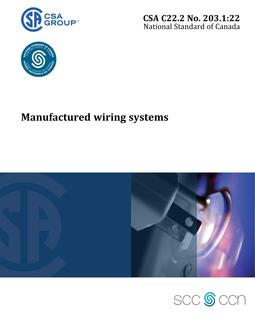Click here to purchase
Preface
This is the first edition of CSA Z364.5, Safe installation and operation of hemodialysis and peritoneal dialysis in a home setting.
Introduction
Since the introduction of home hemodialysis and peritoneal dialysis (home dialysis) to Canada more than thirty years ago, these technologies have developed into an increasingly important treatment option for clients with renal disease. The benefits of home dialysis for the client are many and include greater flexibility and convenience, more time with family, a greater sense of independence and control, fewer transportation issues, fewer admissions to hospital, and mounting evidence of improvements in long-term clinical outcomes.
Although in most cases home dialysis is taking place safely, it has become apparent that as the number of Canadians needing renal replacement therapy grows, the industry needs a common home dialysis Standard to provide consistent requirements and practices. While the basic set-up requirements are fundamentally similar among dialysis providers, the methodology varies, and as a result the outcomes can be inconsistent. This Standard was developed to resolve these inconsistencies and improve the use of best practices across Canada.
Scope
1.1
This Standard specifies requirements for the safe installation and operation of hemodialysis and peritoneal dialysis performed in a home setting. It is intended for use by dialysis providers, including health care workers and professionals who perform technical and operational functions associated with home dialysis, as well as stakeholders who have an interest in safety or related quality assurance (e.g., professional associations, regulators, and consumers).
This Standard is intended to provide a comprehensive, integrated, and consistent management framework to ensure that a completed home dialysis set-up and its major systems meet the necessary technical and operational requirements. The major systems covered include
- (a) quality management;
- (b) home assessment;
- (c) physical space requirements;
- (d) plumbing requirements;
- (e) water requirements;
- (f) electrical requirements;
- (g) supply storage and waste management;
- (h) emergency preparedness;
- (i) client and caregiver training; and
- (j) documentation and records.
1.2
This Standard is not intended to apply to hemodialysis or peritoneal dialysis performed in a hospital or a regional dialysis clinic setting.
1.3
In CSA standards, “shall” is used to express a requirement, i.e., a provision that the user is obliged to satisfy in order to comply with the standard; “should” is used to express a recommendation or that which is advised but not required; and “may”” is used to express an option or that which is permissible within the limits of the standard.
Notes accompanying clauses do not include requirements or alternative requirements; the purpose of a note accompanying a clause is to separate from the text explanatory or informative material.
Notes to tables and figures are considered part of the table or figure and may be written as requirements.
Annexes are designated normative (mandatory) or informative (nonmandatory) to define their application.
Product Details
- Edition:
- 1st
- Published:
- 11/01/2010
- ISBN(s):
- 9781554915408
- Number of Pages:
- 42
- File Size:
- 1 file , 820 KB
- Product Code(s):
- 2420879, 2421093, 2421093, 2420879, 2421093


